Kürzlich verschlug es mich dienstlich mal in unser Nachbarland Tschechien. Da eigentlich eine Kollegin für diese Region zuständig ist, bin ich sehr selten dort - soweit ich mich erinnern kann war mein letzter Besuch im Winter 2016 - und daher freue ich mich um so mehr euch ein paar Impressionen meiner Reise zu zeigen.
Wir haben im Landesteil Böhmen in der Region Karlovarský kraj, welche am westlichsten Ausläufer des Landes liegt, ein Produktionswerk. Verwaltungssitz der Region ist die Stadt Karlovy Vary oder deutsch Karlsbad und da man dort abends auch nett Essen gehen und ein Bier trinken kann, kommen meine Kollegen und ich traditionell dort unter.
Recently I was on a business trip in our neighbouring country Czech Republic. Actually a colleague is responsible for this region, so I’m very rarely there - as far as I remember my last visit was in winter 2016 - and therefore happy to show you some impressions of my trip.
We’ve got a production plant in the part of Bohemia in the region Karlovarský kraj, which lies at the most western part of the country. The administrative centre of the region is the town of Karlovy Vary, which is a pretty touristic town, with a lot of restaurants and bars, where you can have a nice meal and a beer, so my colleagues and I traditionally stay there.
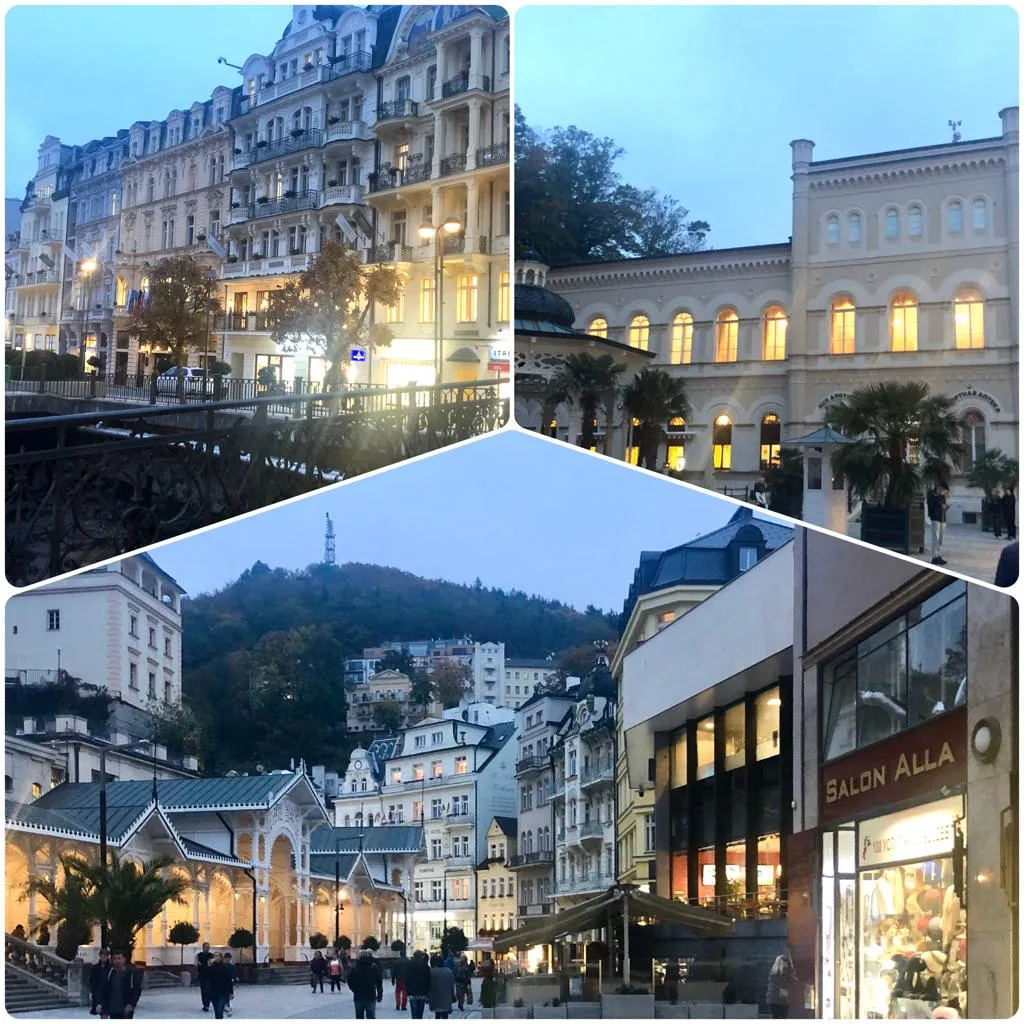
Anreise
Von Deutschland aus, kann man die Strecke gut mit dem Auto bewältigen, je nachdem aus welcher Richtung man kommt, sind es gerade mal 30 - 50 km von der deutschen Grenze bis in die Stadt.
Wenn man jedoch wie ich über 600km entfernt wohnt, ist die Flugreise durchaus eine Option. Karlsbad selbst hat zwar einen internationalen Flughafen, die einzige direkte Flugverbindung besteht allerdings mit Moskau, was mir nur bedingt hilft, da ich ja aus dem Westen anreise.
Die nächsten Flughäfen sind somit Prag (ca. 120km), Dresden (ca. 170km) und Nürnberg (ca. 200km). Ich entschied mich schließlich für Prag. Die Strecke ist zwar erheblich kürzer, jedoch wird auf der Straße viel gebaut und so dauert die Taxifahrt vom Flughafen bis Karlsbad, je nach Tageszeit, auch fast zwei Stunden.
Meine erste Impression bei der Ankunft am Flughafen war übrigens diese hier, eine echtes Tschechisches Original:
Arrival
From Germany, you can easily travel by car, depending on which direction you are coming from, it is just 30 - 50 km from the German border to the city.
But if you live more than 600 km away like me, traveling by plane is a good option. Karlovy Vary itself has an international airport, but the only direct flight connection is to Moscow, which isn’t helpful for me at all.
The nearest airports are Prague (approx. 120 km), Dresden (approx. 170 km) and Nuremberg (approx. 200 km). I finally decided to go to Prague. The distance is considerably shorter, but there’re a lot iof road works on the road and so the taxi ride from the airport to Karlovy Vary takes almost two hours, depending on the time of day.
My first impression when I arrived at the airport was this one, a real Czech original:
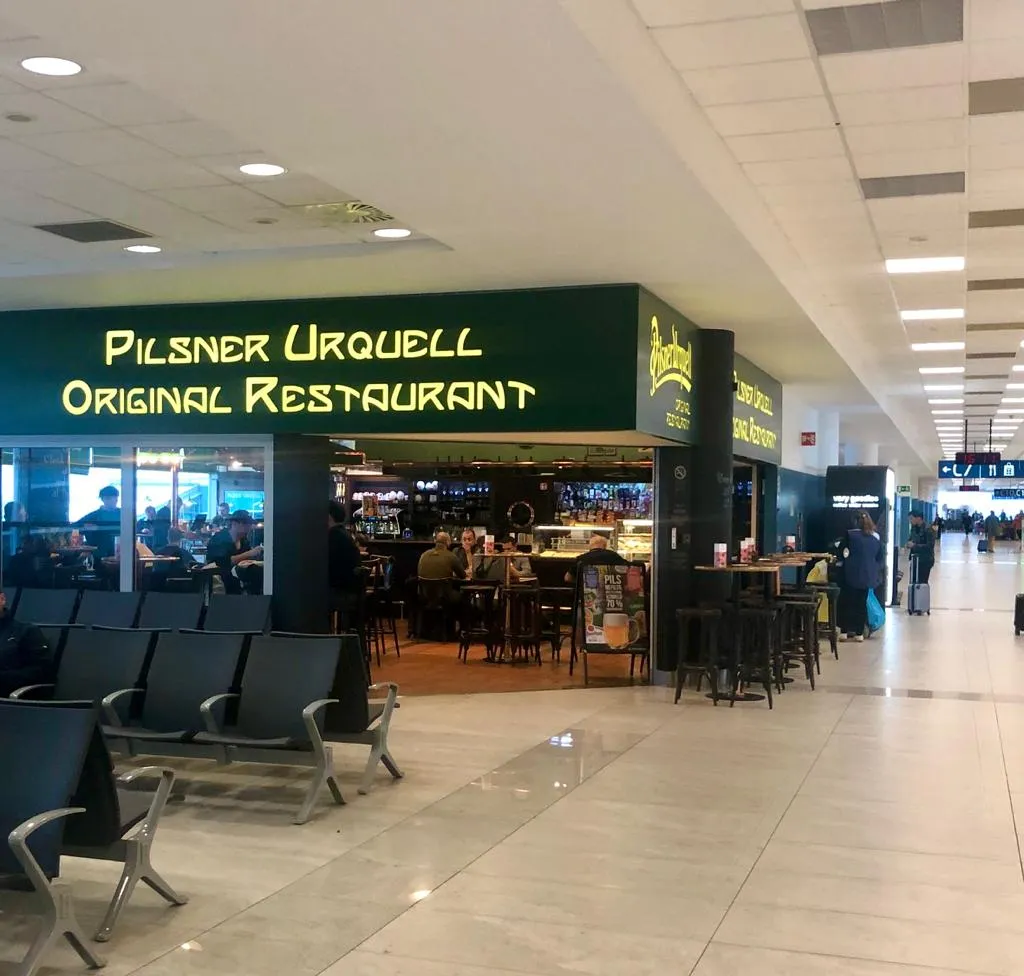
Mein Hotel liegt in unmittelbarer Nähe des historischen Stadtzentrums und ist mit allen möglichen Annehmlichkeiten ausgestattet, die ich jedoch vermutlich nie zu Gesicht bekommen werde.
Ich erreiche die Stadt am frühen Abend, es beginnt bereits dunkel zu werden und so mache mich direkt nach dem Check-In im Hotel auf den Weg, das letzte Licht ausnutzen für ein paar Fotos.
Das erste was ich beim Betreten der Straße entdecke ist dieses Schild, dass ich so noch nicht gesehen habe. Ich lasse das jetzt mal unkommentiert. ;-)
My hotel is directly located in the historic city centre and equipped with all kinds of amenities that I will probably never see.
I reach the city in the early evening, it is already getting dark and so I start right after the check-in at the hotel in order to use the last light for some photos.
The first thing I see when I enter the street is this sign that I haven't seen before. I leave it uncommented. ;-)
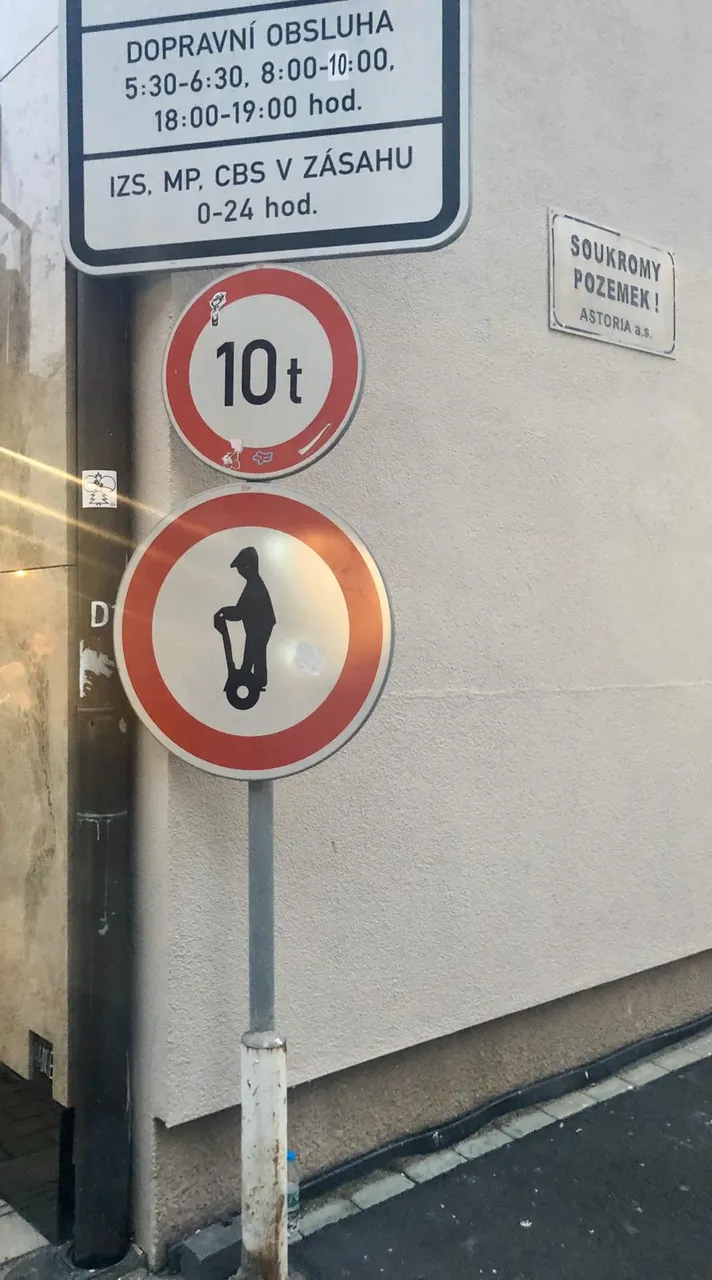
Karlovy Vary
Karlovy Vary ist einer der berühmtesten und traditionsreichsten Kurort Europas und bekannt für seine vielen Quellen und Bäder. Insgesamt gibt es dort 12 Quellen mit 89 dokumentierten Austritten von mineralisierten Thermalwässern. Die bekannteste wird Sprudel genannt und schießt, mit einer Wassertemperatur von 72°C, bis zu 14 Meter in die Höhe.
1370 wurde der Ort von Karl IV zur Königsstadt ernannt und so wurde aus damals Vary (Warmbad) Karlovy Vary oder deutsch Karlsbad.
Die Heilwirkung der Thermalquellen ist bereits seit dem 14 Jahrhundert bekannt und so wurden schon in der Geschichte immer wieder Leiden mit Hilfe der Wässer behandelt und kuriert. Der Kurbetrieb wurde jedoch im Laufe der Jahrhunderte immer wieder durch Naturkatastrophen, Kriege und Brände unterbrochen und viele Gebäude mussten neu errichtet werden. Vollständig erblüht ist Karlovy Vary schließlich erst im 19.Jahrhundert, aus dieser Zeit stammen auch die meisten Gebäude.
Die Heilwirkung der Quellen soll bei der Behandlung zahlreicher Leiden helfen, von Erkrankungen von Leber, Gallenblase, Magen, Harnröhre und Bauchspeicheldrüse, über Geschwüre in Magen und Darm, Verstopfungen, Entzündungen, Diabetes, Fettleibigkeit, Gicht, bis hin zu verschiedenen Allergien.
Karlovy Vary
Karlovy Vary is one of the most famous and traditional health resorts in Europe and famous for its many springs and baths. In total there are 12 springs with 89 documented mineralized thermal water outlets. The most famous one is called Vřídlo (geyser) and has got a water fountain of up to 14 meters height with a water temperature of 72°C.
In 1370, Charles IV declared the town a royal town and Vary (warm bath) became Karlovy Vary.
The healing effect of thermal springs has been known since the 14th century and so in history sufferings have been treated and cured with help of this water. However, over the centuries the spa has been interrupted by natural disasters, wars and fires, many buildings have had to be rebuilt. Finally Karlovy Vary was booming in the 19th century and most of the buildings date from this period.
The healing effect of the springs is said to help in the treatment of numerous ailments, from liver, gall bladder, stomach, urethra and pancreas diseases, to ulcers in the stomach and intestines, constipation, inflammation, diabetes, obesity, gout and various allergies.
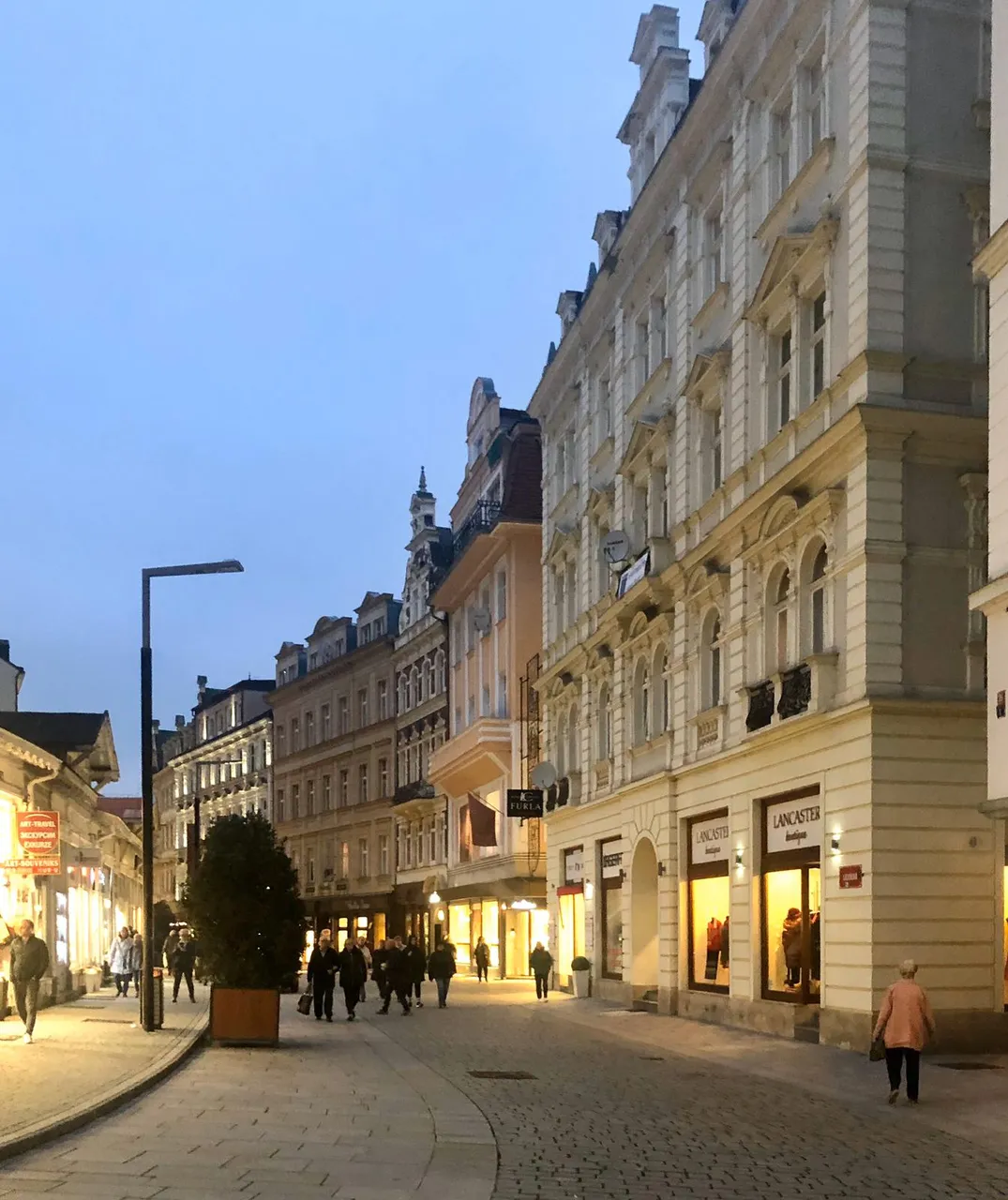
Die Pestsäule
Beim Verlassen des Hotels stehe ich vor der Säule der Dreifaltigkeit oder auch Pestsäule genannt. Ein wirklich interessantes Bauwerk, das immer interessanter wird, je länger man darüber recherchiert.
Die Säule wurde 1715-1716 errichtet aus Dankbarkeit, dass die Stadt 1713 von der Pest verschont blieb und zeigt in erster Linie die Krönung der Jungfrau Maria durch die heilige Dreifaltigkeit.
Man findet auf ihr Symbole für das Christentum, aber auch fürs Judentum (Davidstern) und den Islam (Sichelmond), wodurch sich erneut eine Dreifaltigkeit ergibt. Inwieweit das beabsichtigt war, vermochte ich nicht herauszufinden.
The plague column
When I left the hotel I was standing in front of the Pillar of the Trinity or the Plague Column. A really interesting building, that becomes more and more interesting the longer you investigate.
The column was built 1715-1716 out of gratitude that the city survived the plague in 1713 and shows first and foremost the coronation of the Virgin Mary by the Holy Trinity.
There are symbols for Christianity, but also for Judaism and Islam, which once again form a kind of trinity. I wasn’t able to find out if how far this was intended.
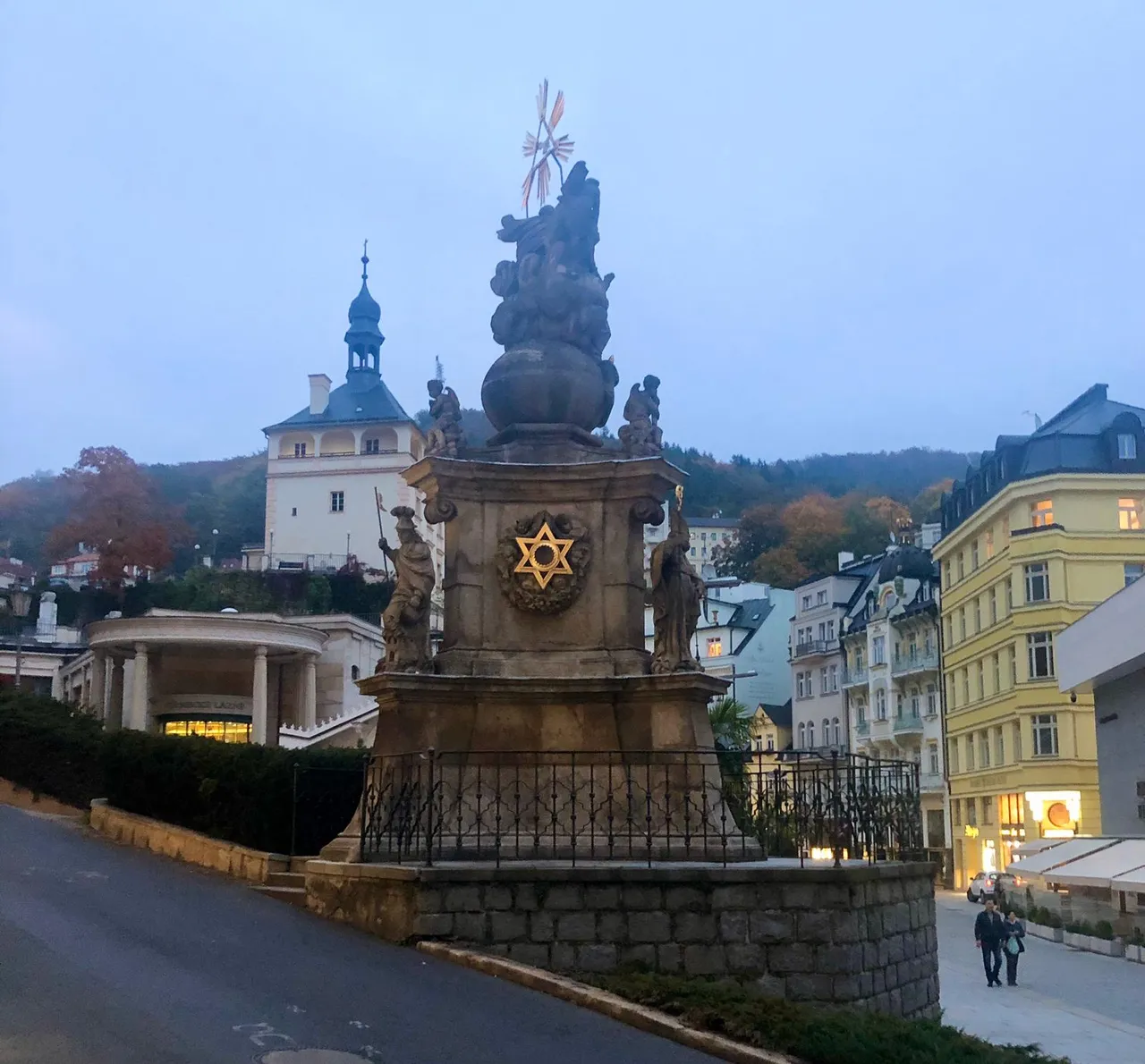
Marktkolonnade
Mein Weg führt mich in das Stadtzentrum, zuerst vorbei an den Marktkolonnade. Das Gebäude ist über und über mit filigranen Holzschnitzereien versehen und beherbergt drei sprudelnde Mineralquellen.
Eine dieser Quellen ist nach Karl IV benannt, an ihr soll der Kaiser bereits seine kranken Glieder kuriert haben.
Im Hintergrund sieht man den Schlossturm, der einst zur Burg von Karl IV gehört, durch einen Brand 1604 wurde dies zerstört. Der Turm der diesen Brand überstand, wurde zunächst zu einem Wachturm umfunktioniert und beherbergt heute Ausstellungsräume.
Market Colonnade
My way leads me to the city centre, first past the market colonnade. The building is decorated with filigree wood carvings and houses three mineral springs.
One of these springs is named after Charles IV, it is said that he cured his sick limbs with it.
In the background you can see the castle tower, which once belonged to the castle of Charles IV. That castle was destroyed by a fire in 1604, but the tower that survived and was initially converted into a watchtower, meanwhile it houses exhibition rooms.
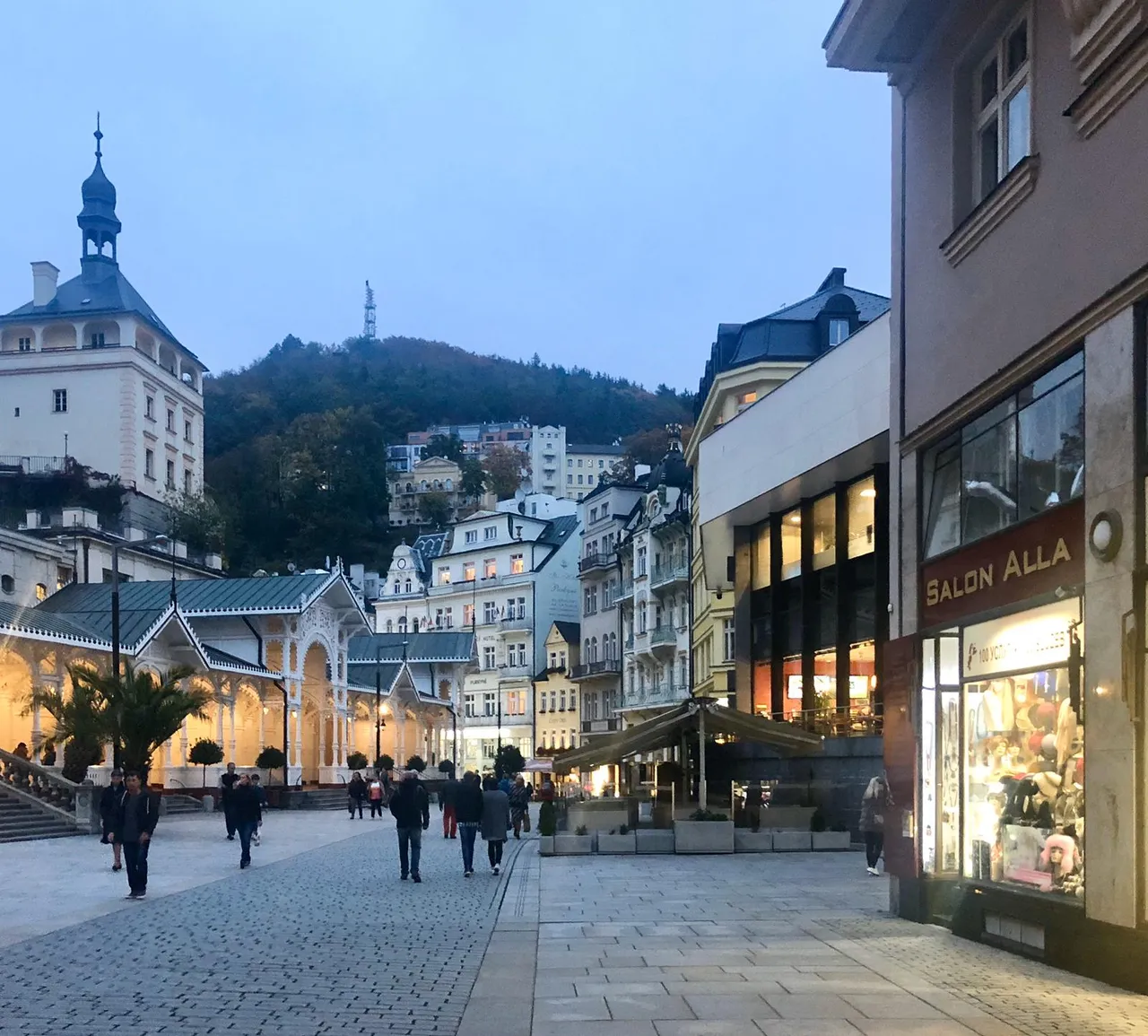

Mühlbrunnenkolonnade
Kaum hat man die eine Kolonnade hinter sich gelassen und schlendert vorbei an einigen Geschäften, erscheint auch schon das nächste imposante Gebäude vor einem.
Die Mühlbrunnenkolonnade ist die größte in Karlsbad und beherbergt gleich 5 Mineralquellen. Die mächtigen Steinsäulen sind sehr beeindruckend und das gesamte Bauwerk ist reichlich verziert. Auf dem Platz davor Menschen über Menschen und ein einzelner Geiger, die Stimmung schwankt zwischen romantisch und kitschig.
Mill fountain colonnade
As soon as I have left one colonnade behind and stroll past some shops, the next impressive building already appears in front of me.
The Mill Fountain Colonnade is the largest in Karlovy Vary and houses 5 mineral springs. The mighty stone columns are very impressive and the whole building is richly decorated. On the square in front of it many people gather and a single violinist is playing, the mood is somewhere between romantic and cheesy.

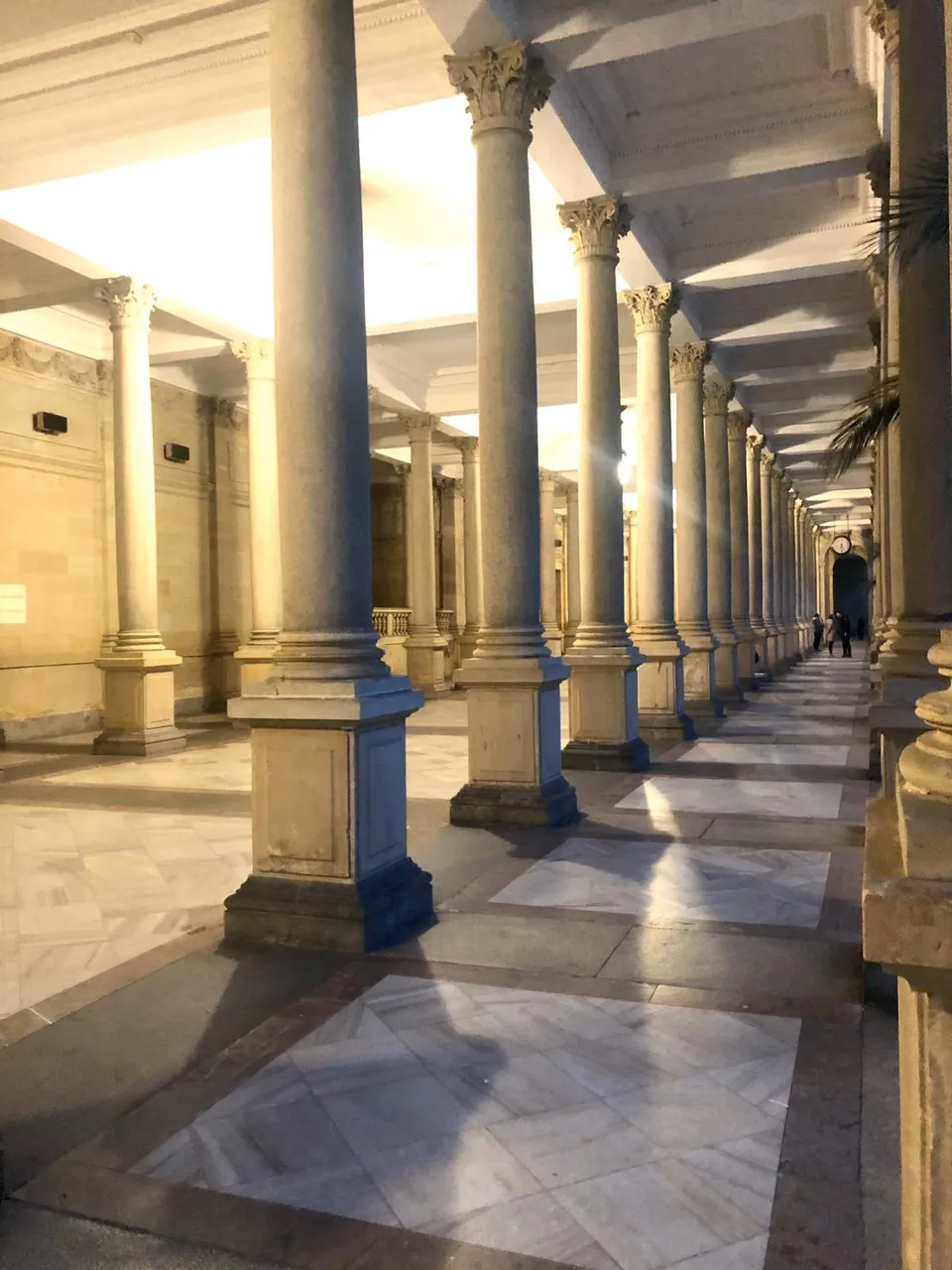
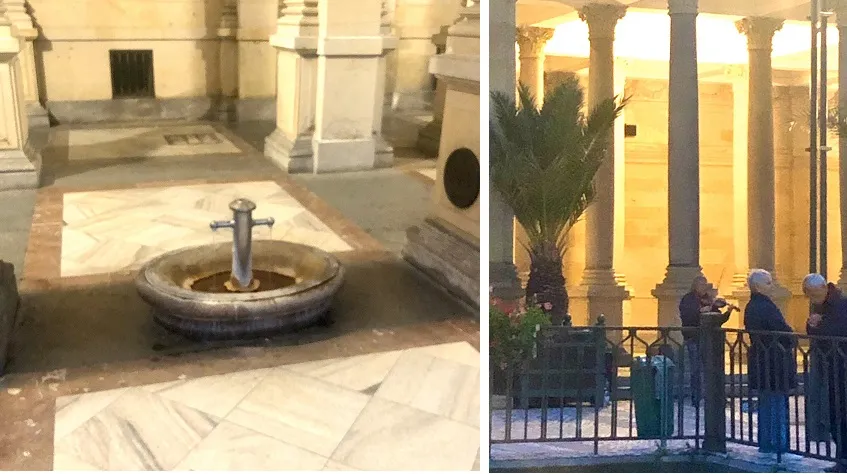
Bad III und die Freiheitsquelle
Fast direkt hinter der Kolonnade liegt das BAD III, eine großes Kurhaus, welches auch als kulturelles Zentrum genutzt wird und unter anderem dem Karlsbader Symphonieorchester für Konzerte dient.
Direkt daneben sieht man den Pavillion der Freiheitsquelle, die erst Mitte des 19. Jahrhunderts entdeckt wurde.
Bad III and the freedom spring
Almost directly behind the colonnade is the bath III, a large spa hotel, which is also used as a cultural centre and serves the Karlovy Vary Symphony Orchestra for concerts.
Right next to it you can see the pavilion of the Freedom Spring, which was only discovered in the middle of the 19th century.
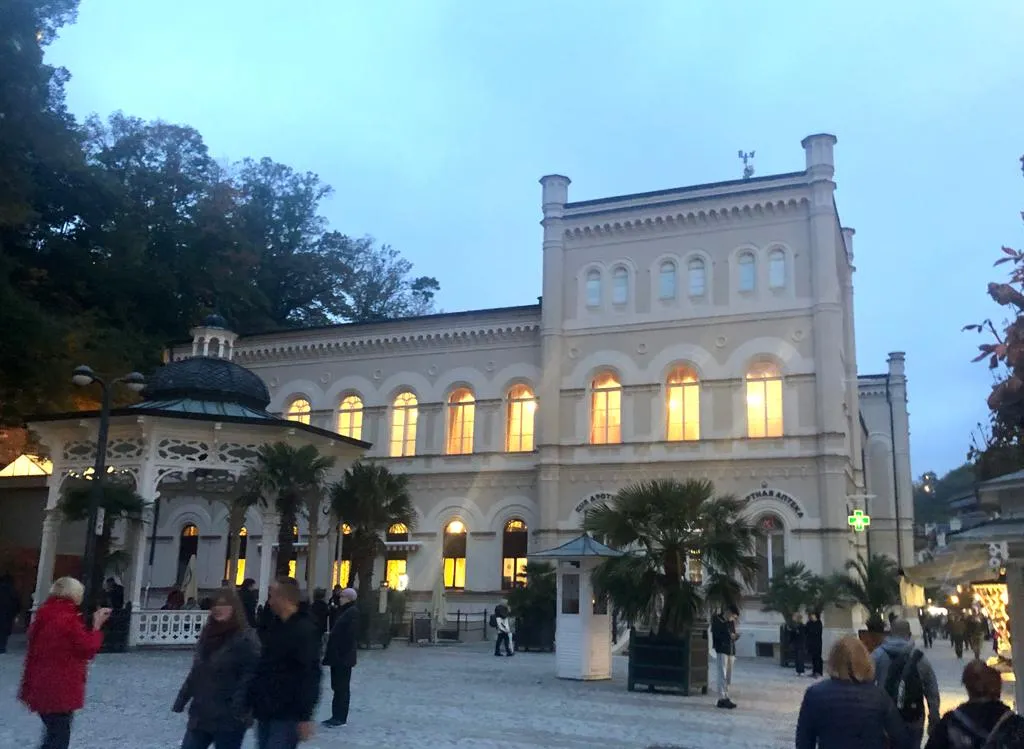
Teplá
Die Fülle an beeindruckenden Gebäuden ist wirklich unglaublich und ein Abendspaziergang alleine reicht kaum aus, um alle Eindrücke zu verarbeiten. Außerdem habe ich noch einen Termin zum Abendessen mit Kunden und mache mich daher auf den Rückweg zum Hotel.
Über eine der zahlreichen Brücken überquere ich die Teplá.
Teplá
The abundance of impressive buildings is unbelievable and an evening walk alone is hardly enough for all this impressions.I also have an appointment for dinner with some customers and so I make my way back to the hotel.
Over one of the numerous bridges I cross the Teplá.
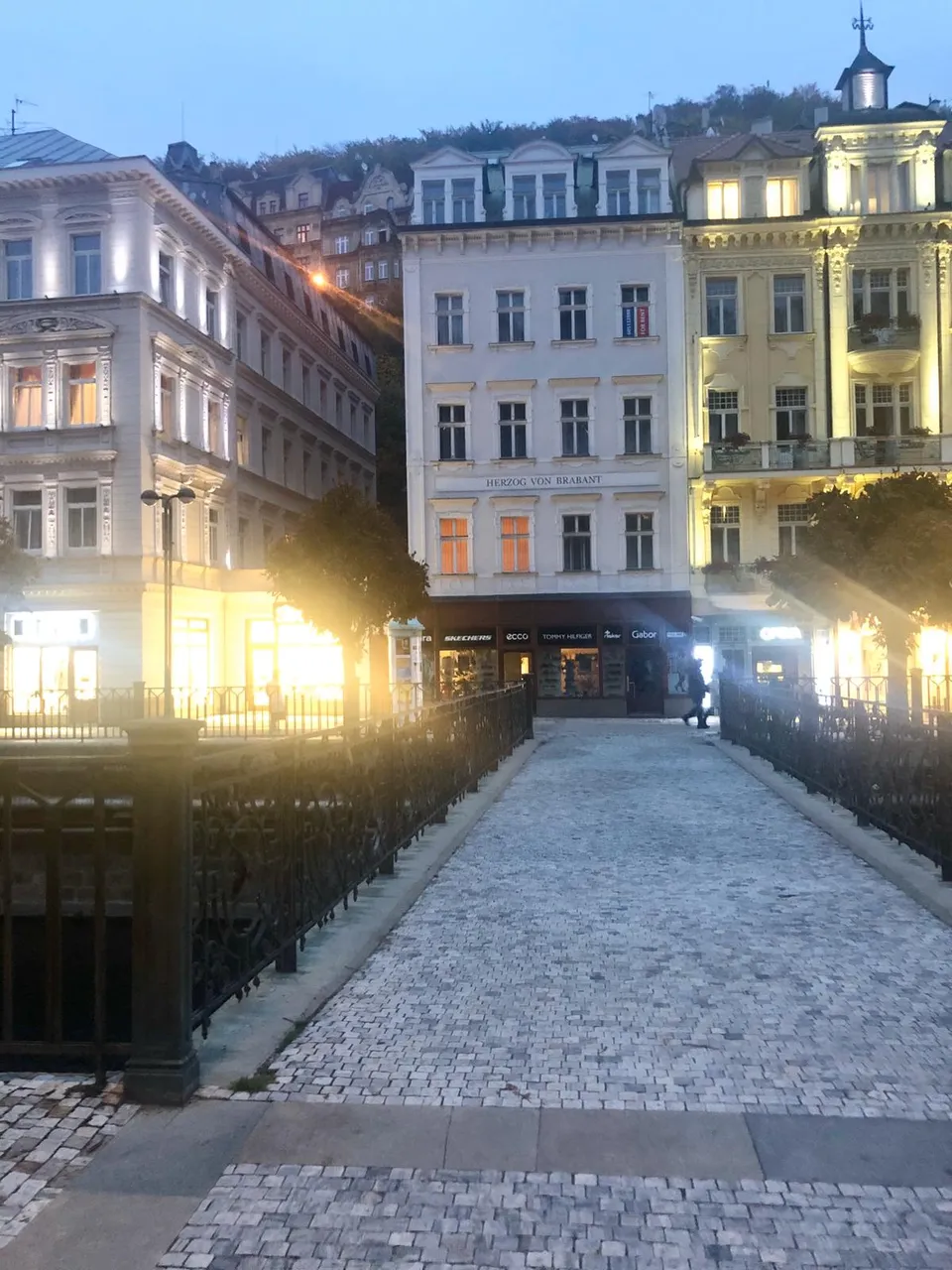
Die Teplá fließt kanalisiert quer durch den Ort und mündet weiter nördlich in der Stadt in die deutlich bekanntere Eger.
The Teplá flows canalized across the town and meets further north the much more famous Eger.
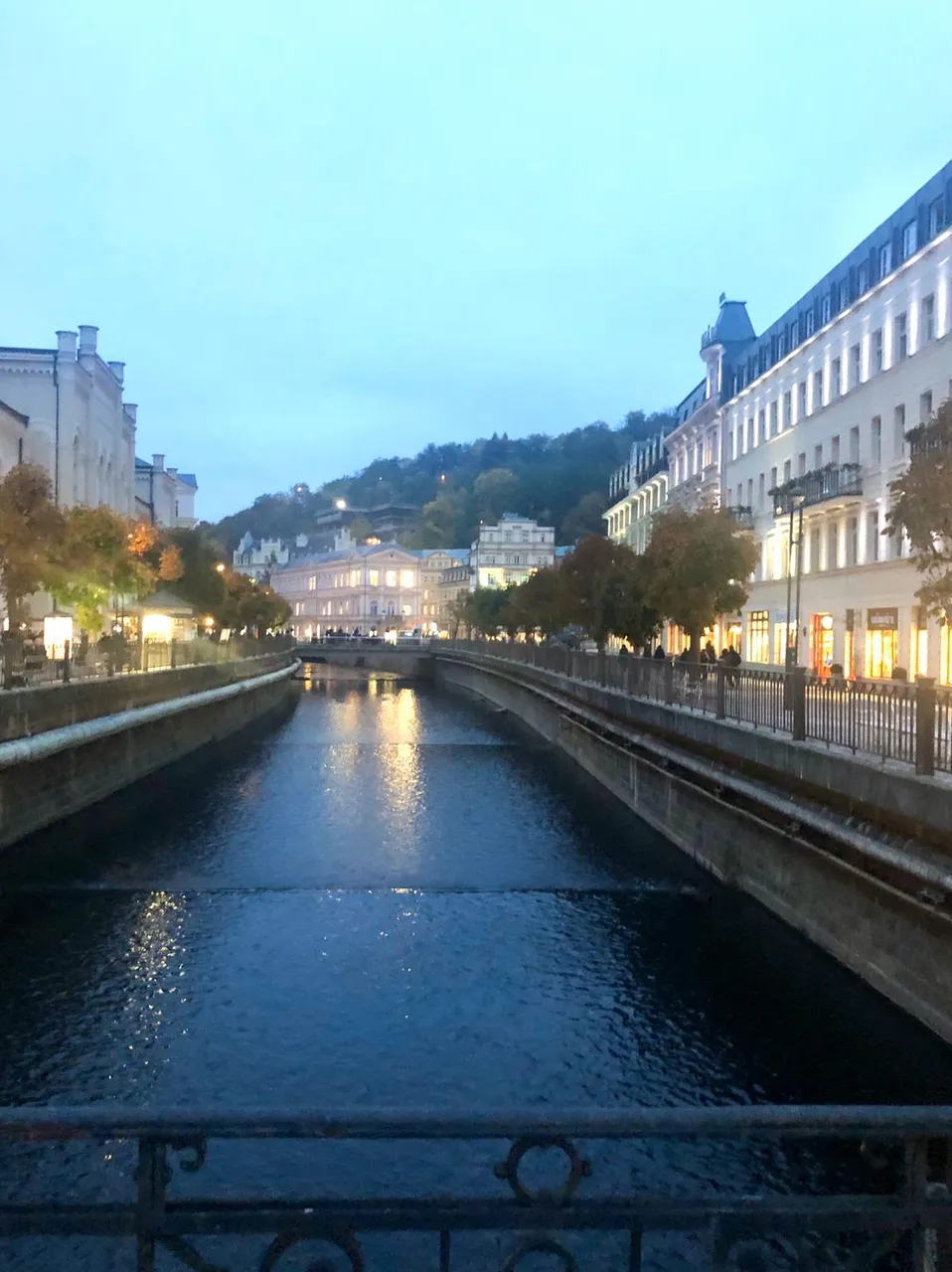
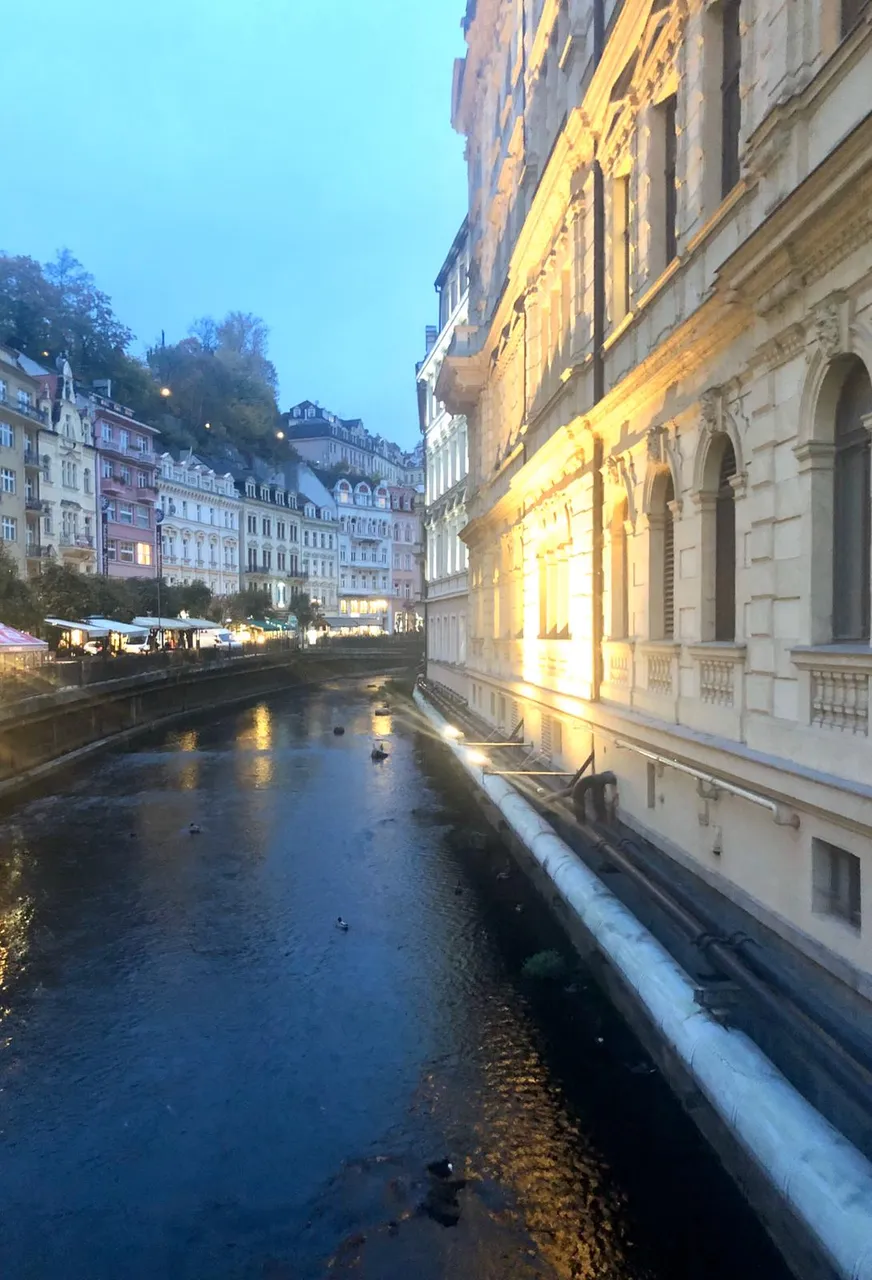
Maria-Magdalenenkirche
Kurz bevor ich wieder das Hotel erreiche, erregt eine strahlend weiße Kirche meine Aufmerksamkeit. Die Maria-Magdalenenkirche hat bereits in 3 verschiedenen Baustilen existiert. Mitte des 14 Jahrhunderts wurde sie im gotischen Stil errichtet, im 16. Jahrhundert dann im Renaissancestil umgebaut, um nach einem Brand im 18 Jahrhundert wieder komplett neu im Stil des Hochbarock errichtet zu werden. 2010 wurde die Kirche schließlich zum nationalen Kulturdenkmal ausgerufen.
Mary Magdalene Church
Shortly before I reach the hotel again, a bright white church attracts my attention. The Maria-Magdalene chruch already existed in 3 different architectural styles. In the middle of the 14th century it was built in gothic style, in the 16th century it was rebuilt in renaissance style and after a fire in the 18th century it was completely rebuilt in high baroque style. In 2010 the church was finally declared a national cultural monument.
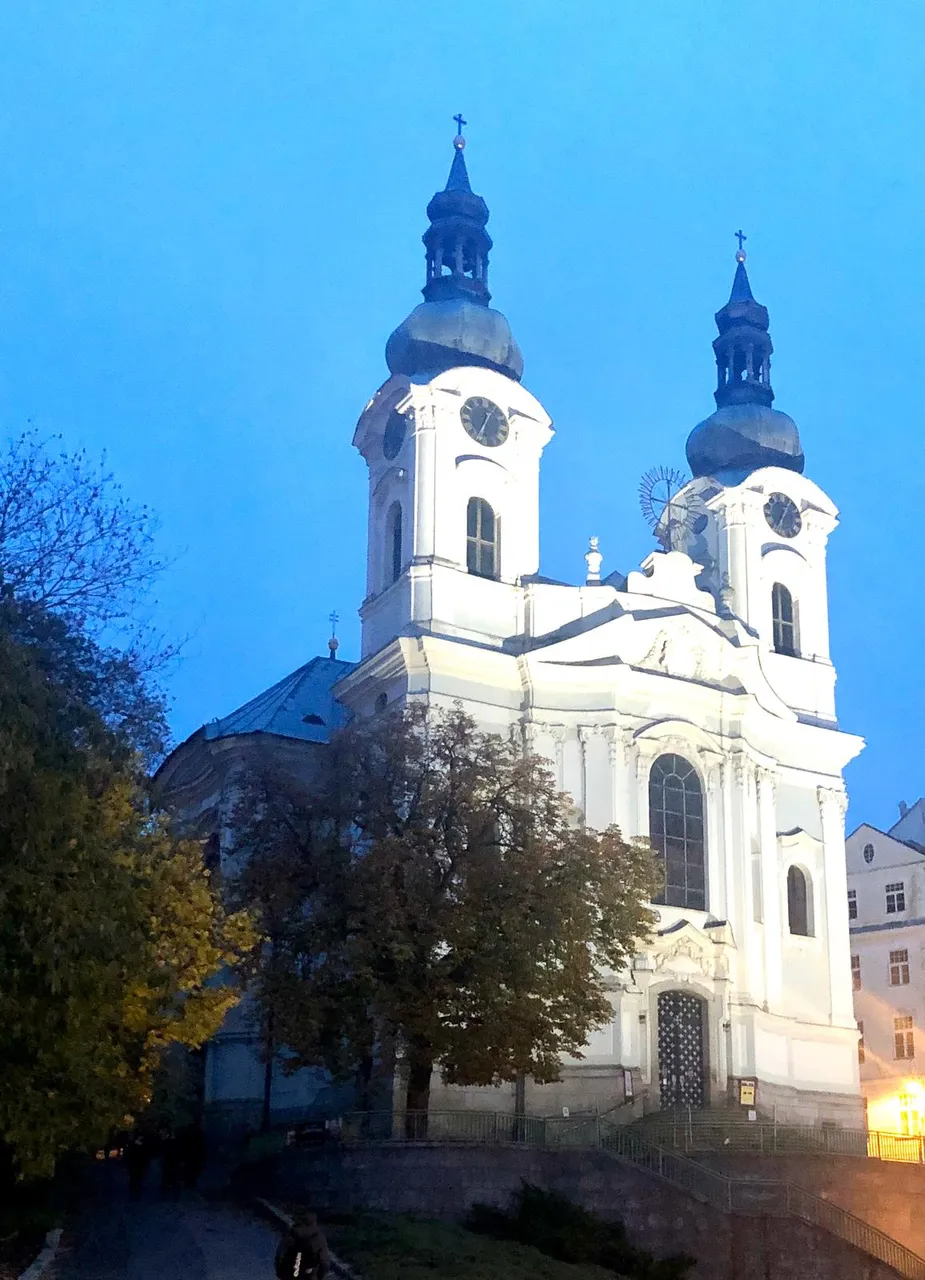
Der kleine Sprudel
Ich erreiche das Hotel, jedoch nicht ohne an einem weiteren Sprudel vorbeizukommen. Es ist nicht der berühmte Sprudel, doch das warme Wasser schießt in die Höhe und man sieht deutliche Dampfschwaden. Ein Touristenmagnet, viele halten ihre Hände ins Wasser und trinken daraus, ich halte meine Hand hineine, es ist warm, ich verzichte lieber es zu trinken.
The geyser
I reach the hotel, but not without passing another geyser. It is not the famous geyser, but the warm water gushes out and you can see vapours. A tourist magnet, many hold their hands in the water and drink from it, the water is warm but I decline to drink.
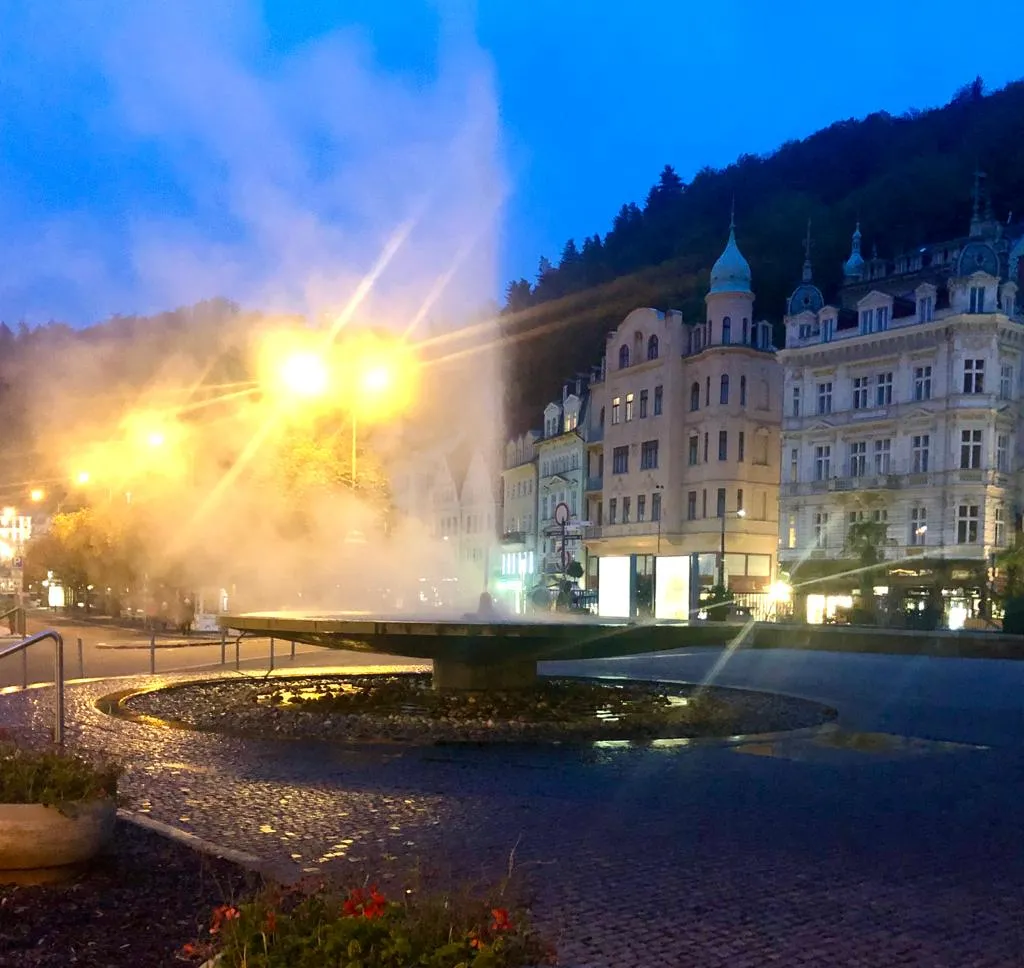
Vielen Dank, dass ihr mich auf meinem Spaziergang begleitet habt. Ich hoffe es hat euch gefallen. Hier ist nochmal die Strecke.
Thank you so much for joining me on my walk. I hope you enjoyed it. Here is the route again.
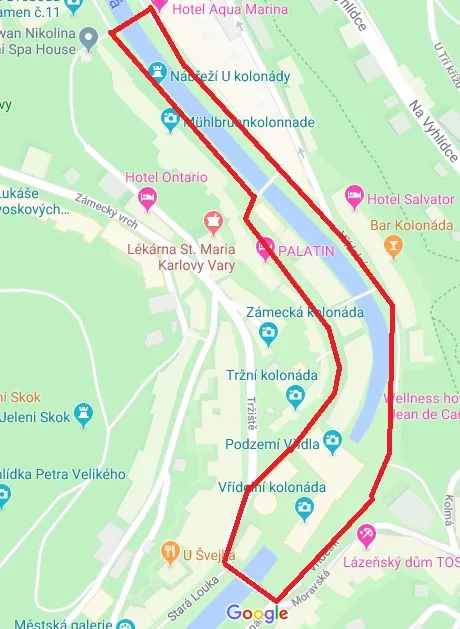 source Google maps
source Google maps
View this post on TravelFeed for the best experience.
